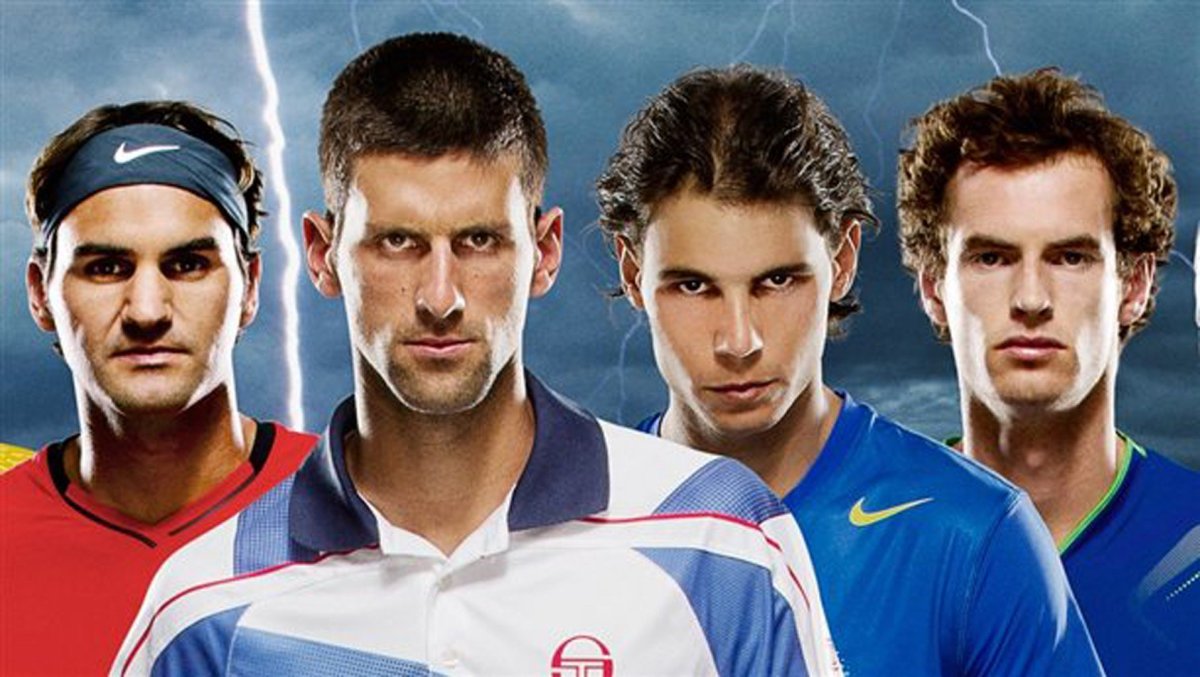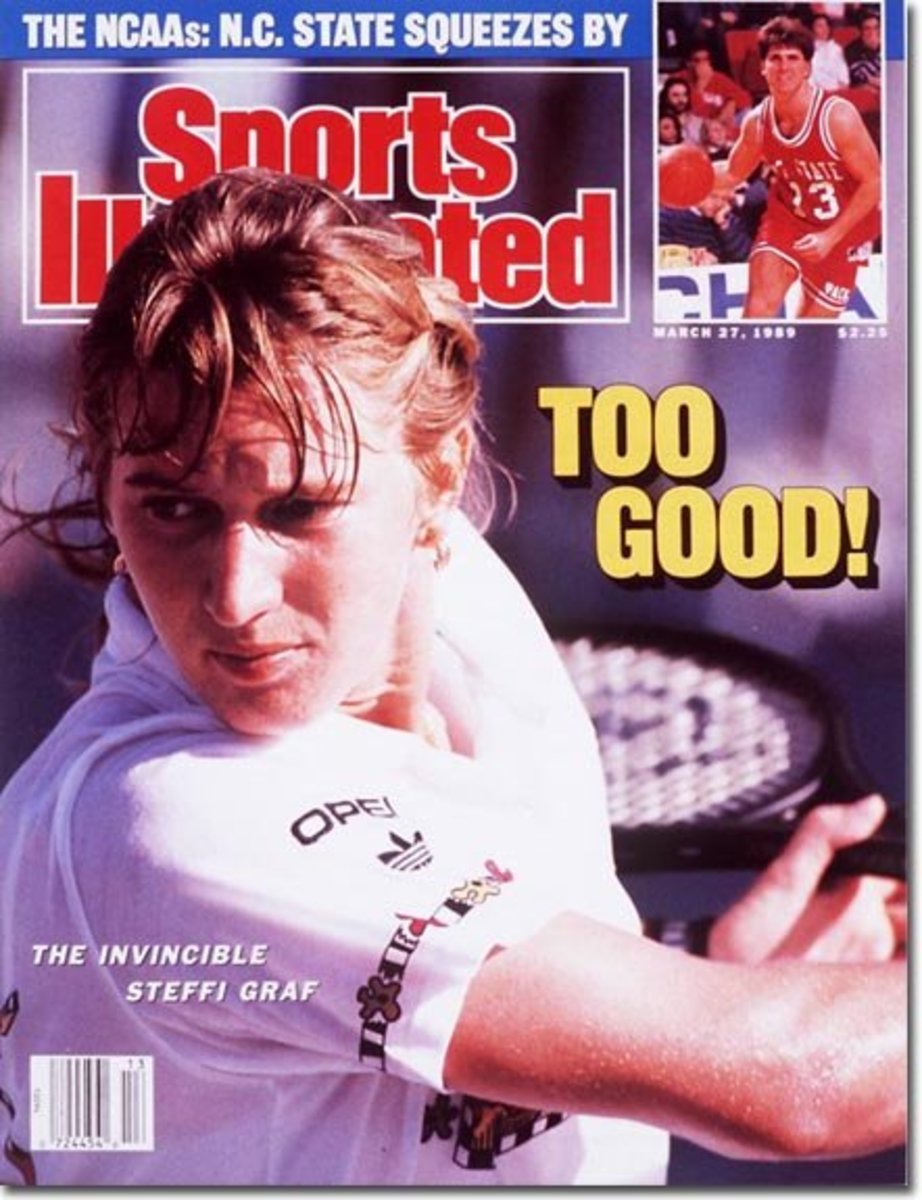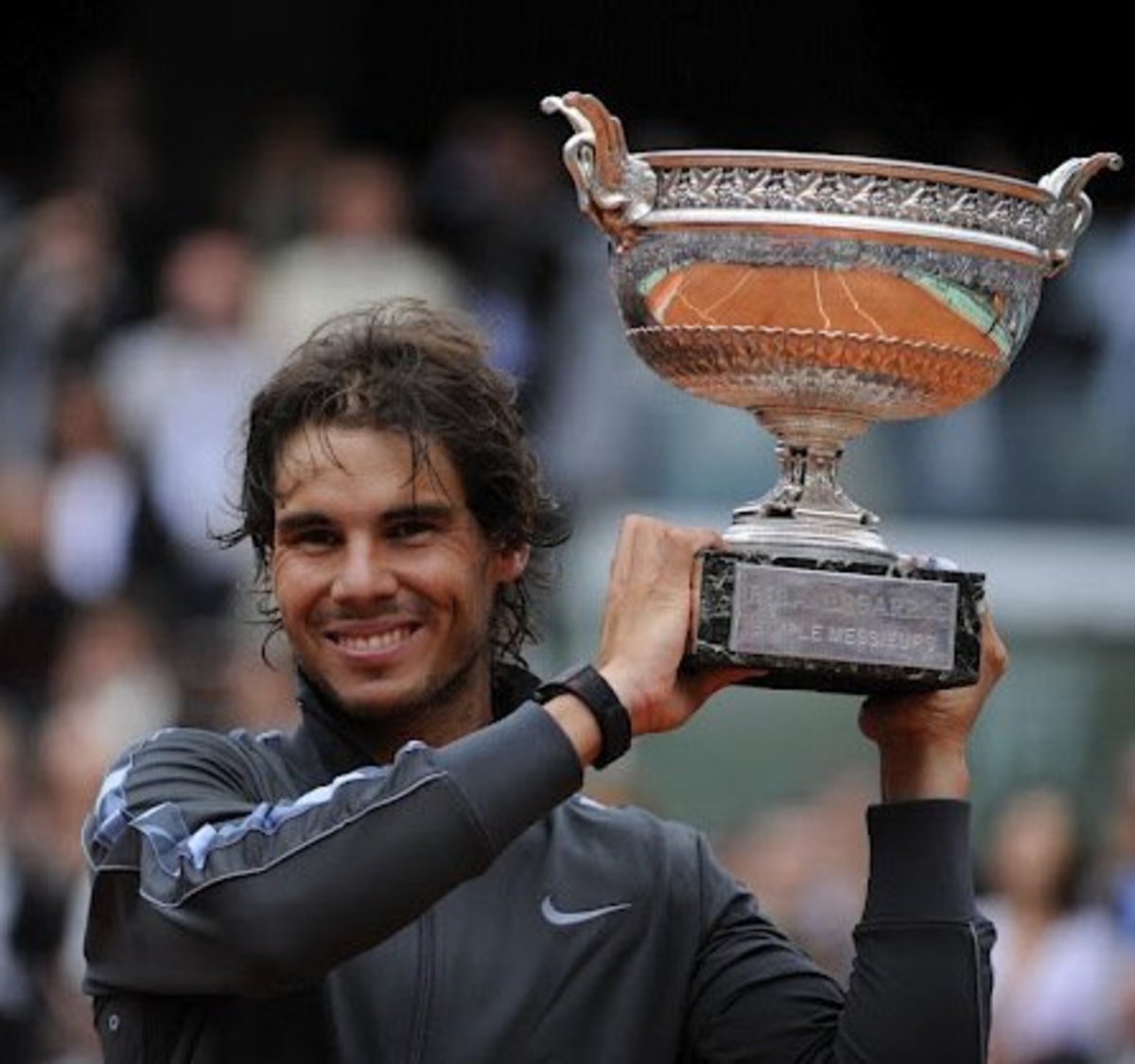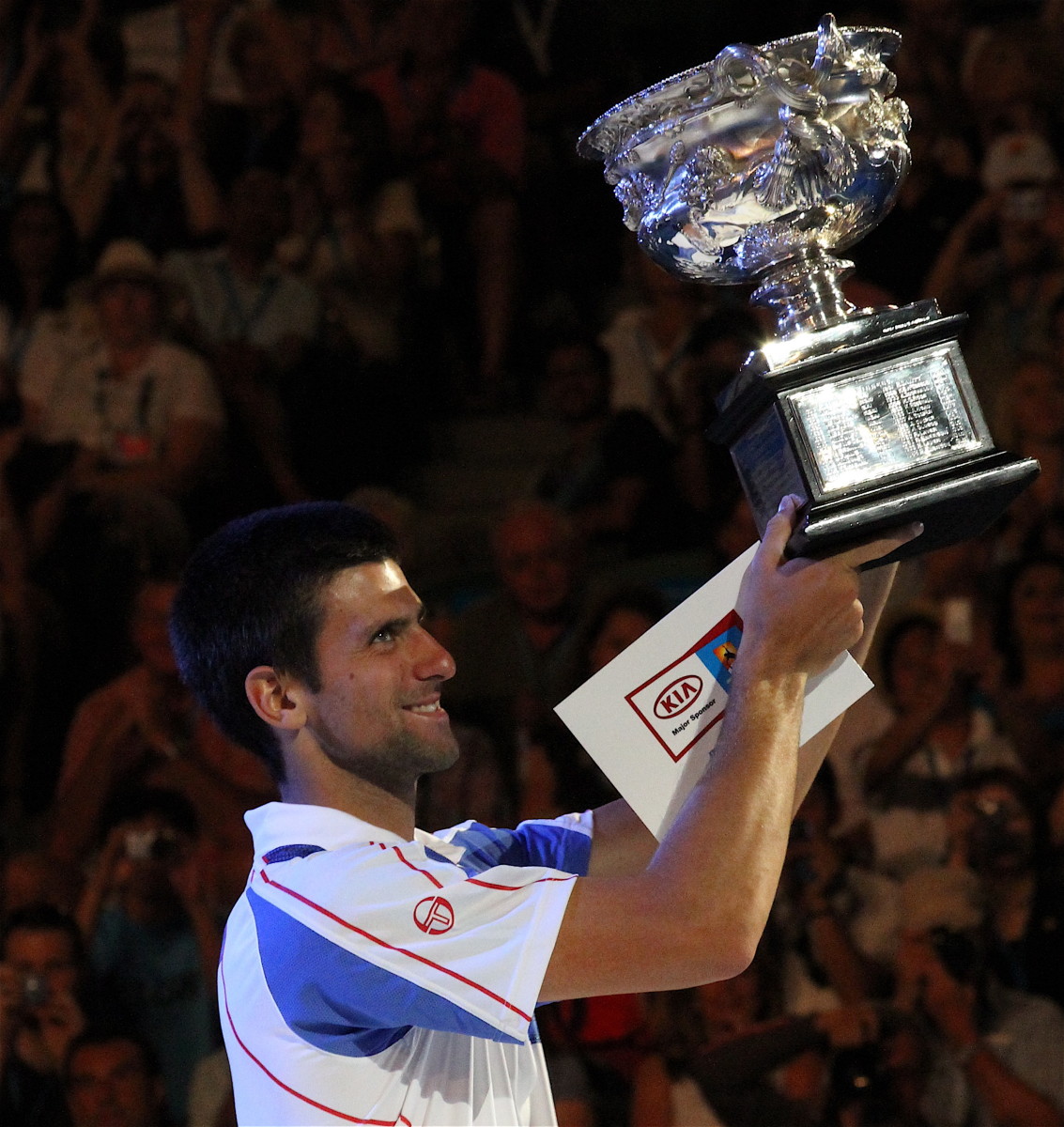History of Wimbledon Tennis
Summary
The first Wimbledon Tennis Championship was held in 1877, making it the oldest tennis tournament in the world, and one which is regarded as the most prestigious. The grass courts of the All England Club have hosted the championships from the very start, and the tournament is steeped in history and tradition.
In the first championship there was only 22 competitors, however, since then the championship has developed and expanded dramatically, with the number of spectators now reaching almost half a million each year.
Traditions
There are various traditions at Wimbledon that help give the tournament a special and unique feel to it. One of the things that has not changed since 1877 is the is the white dress code that players have to adhere to. Since the very first championship, players have worn all white clothing, and this was established as a rule in 1963.
The grass court season is the shortest the year, and with grass being the original surface that tennis was first played on, it therefore adds to the special feel and ambiance of the tournament. Perhaps one of the most well known traditions at Wimbledon is the consumption of strawberries and cream, they have been a feature at Wimbledon since 1884, with around 28000 kilos of strawberries and 7000 litres of double cream consumed each year.
The men's and women's events are also referred to as the Gentleman and Ladies Singles Championships. The championship lasts for 13 days , starting on a Monday and finishing on a Sunday, with the first Sunday known as "Middle Sunday", which is traditionally a rest day for players.
Greatest Wimbledon Moments
1936 - Fred Perry wins third Wimbledon title
Until Andy Murray's triumph in 2013, Fred Perry was the last British player ever to lift the Wimbledon trophy. He dominated the sport in the 1930s, and at 26 he became the first player ever to complete the "career grand slam" by winning all four of the grand slams; the first player ever to do this, and the only British player ever to do so.
His win in 1936 was his third straight Wimbledon, and he amassed 8 grand slam titles, and four years in a row he was ranked number one in the world. He dominated his opponent Gottfried von Cramm in the final, winning in just 40 minutes; the shortest Wimbledon final since 1881.
Such was his success and ability, he was acclaimed and admired all over the world, despite not always receiving the plaudits he deserved in Britain at the time. He came from a working class background, and often clashed with the tennis authorities in a time where class divisions permeated through society.
He was even banned from all LTA courts when he returned from America after turning professional, and also relieved of his honoroury membership of the All England Club, given to winners of the championship. Now however, his achievements are broadly recognised, and he has a Wimbledon gate in his name and a statue to honour his achievements in the All England Club (pictured).
Statue of Fred Perry
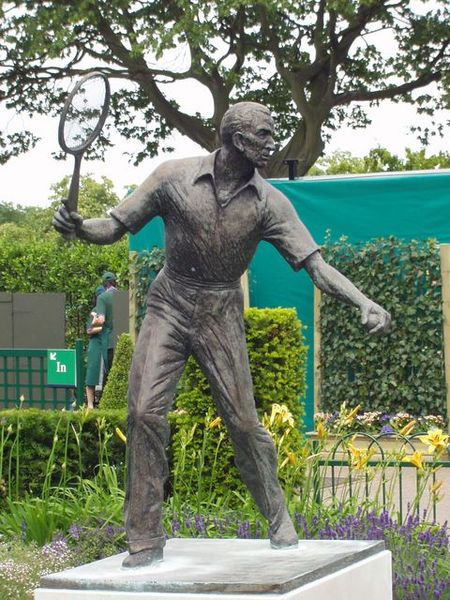
1975 - Ashe shocks Connors
Having crushed all his opponents on his way to the final, without even losing a set, Jimmy Connors was the overwhelming favourite in the 1975 Wimbledon final against the 6th seed and 31 year old fellow American, Arthur Ashe. However, a packed centre court crowd were shocked when Ashe prevailed and triumphed in 4 sets to record a historic win, his 3rd grand slam. Connors said after the game that "everything he did was good" (Ashe) and in winning the championship, Ashe subsequently became the first black man ever to win the Wimbledon title.
1977 - Jubilee win for Wade
On the 100th anniversary of the founding of the Wimbledon Championship, there were two British women into the semi-finals; Sue Barker and Virginia Wade. All the hype seemed to be focused around the youngster, Barker, however, the 31 year old Virginia Wade managed to defeat tournament favourite Chris Evert in her semi-final to set up a meeting with Betty Stove, the woman who defeated Barker. With the British crowd willing Wade on, she triumphed in the final against her Dutch opponent in 3 sets. In previous years she had problems with her temperament, however, on her 16th appearance she kept her cool to win the title in the Queen's jubilee year and was presented the salver by the Queen on Centre Court.
1980 - The Tie-Break
The 1980 Wimbledon final between Bjorn Borg and John McEnroe is often referred to as one of the greatest ever tennis matches. It was one of the sports' greatest rivalries, a contrast between the calmness of Borg, and the aggression of McEnroe. The Swede had bidding for his fifth straight championship, after dominating the tournament in previous years. In McEnroe he faced an opponent who was booed when coming onto the court, after heated exchanges with officials in his semi-final against rival Jimmy Connors. The match is especially remembered for the incredible fourth set tie break, which is simply known as "The Tie-Break" or "The war of 18-16".
After losing the first set, Borg bounced back to take the next two sets. In a tight fourth set, in which McEnroe managed to save two match points when Borg led 5-4, they found themselves battling it out in a dramatic tie-break which lasted a total of 22 minutes, only 5 minutes less than the rest of the whole set. Borg had more match points, and set points came and went for McEnroe, but he eventually clinched the 4th set 18-16 in the best tie break ever played. Despite winning the fourth set, Borg came through 8-6 in the final set to win the title. It was Borg's fifth consecutive Wimbledon title, a record that has only been equaled by the great Roger Federer.
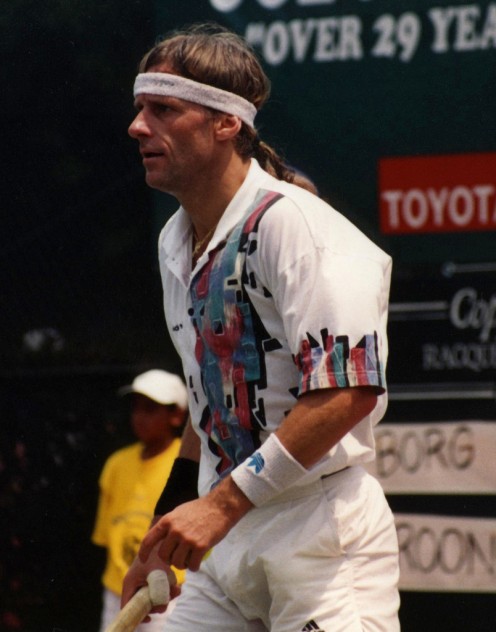
1985 - 17 year old Boris Becker wins Wimbledon
The German entered Wimbledon as an unheralded teenager, and left as the youngest champion in the history of the Wimbledon championship. He had been in good form prior to the tournament, winning the Queens club tournament, however, it was a still a major shock when he progressed through the tournament and faced the American, Kevin Curren, in the final. He played a determined and aggressive style of tennis, often diving about the court to return shots in at the net. He managed to prevail in the final in 4 sets, subsequently becoming the first ever German to win Wimbledon, and the first unseeded player ever to win the coveted championship. This would be the first of his 3 Wimbledon titles, and 6 grand slam titles.
1990 - Navratilova wins last singles grand slam
Martina Navratilova's last ever grand slam triumph would come at Wimbledon in 1990. After rival Steffi Graf was defeated in the semi-final, Navratilova went on to reach an incredible ninth straight Wimbledon final, and in the final against Zina Garrison she triumphed to gain a record breaking ninth Wimbledon title. Nobody even came close to winning a set against the 33 year old, let alone a match. After she retired, she would later say that her last Wimbledon title " was a lovely way to finish the story, if you like. A golden day." Amazingly, in her career she won a total of 18 singles grand slams, and a record 41 doubles grand slam titles.
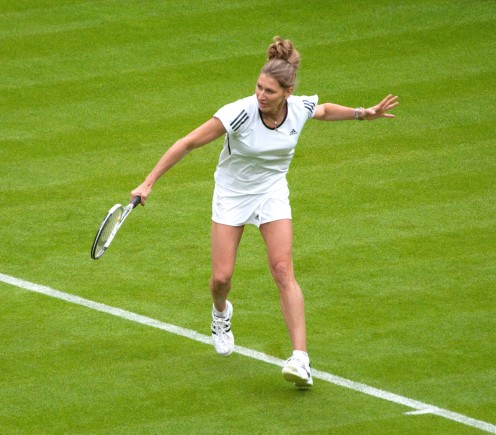
1996 - Steffi Graf wins seventh Wimbledon
The German was the most successful player of her generation, winning 22 grand slams, and not only completing the "career grand slam", but winning each grand slam at least four times. Many regard her as the best female player of all time. Her win at Wimbledon in 1996 was her seventh and last Wimbledon title, after defeating Arantxa Sanchez Vicario in the final in straight sets. She would play her last Wimbledon final in 1999, but was defeated by Lindsay Davenport.
2000 - Sampras wins seventh Wimbledon title
After winning 12 grand slams prior to 2000, Pete Sampras was looking for one more to break Roy Emerson's grand slam record. Yet, prior Wimbledon 2000 he had injury concerns, and even stated that he would have withdrawn if it was any other tournament. The tournament opened up for him however, and he benefited from an easier draw to reach the final against the Australian Pat Rafter. Despite losing the first set, he powered his way to victory and claimed his 13th grand slam and 7th Wimbledon title.
He broke into tears at the end, and it was fitting that he would break the grand slam record at the place where he had the most success in his career. His win in the final meant he had won 28 straight matches on the grass courts of Wimbledon, and he held an unbelievable record of 53 matches won and 1 match lost between 1993 and 2001. He won one more grand slam at the US Open in 2002, and his success meant that he firmly asserted himself as one of the greatest players of all time, ending his career with 7 Wimbledon titles to his name.
2001 - Wildcard, Goran Ivanisevic, wins Wimbledon
The big serving Croat entered Wimbledon in 2001 as a wildcard after losing in three previous Wimbledon finals in 1992, 1994 and 1998. However, he was slipping down the rankings, and had been troubled by various injuries. Seemingly, he was on the decline and reaching the twilight of his career, with some predicting he was close to retirement. Yet, he found form and powered through the tournament, before coming up against British hopeful Tim Henman in the semi-final.
The Brit, buoyed by a home support, found himself on the verge of his first grand slam final. However, the weather turned against him, forcing a rain delay which halted his momentum, and eventually enabled Ivanisevic to come back and break the hearts of the home crowd to set up a final against Pat Rafter, the runner up from 2000. In an exciting 5 set match, Ivanisevic edged out the Australian to become the first wildcard ever to win the Wimbledon Championship.
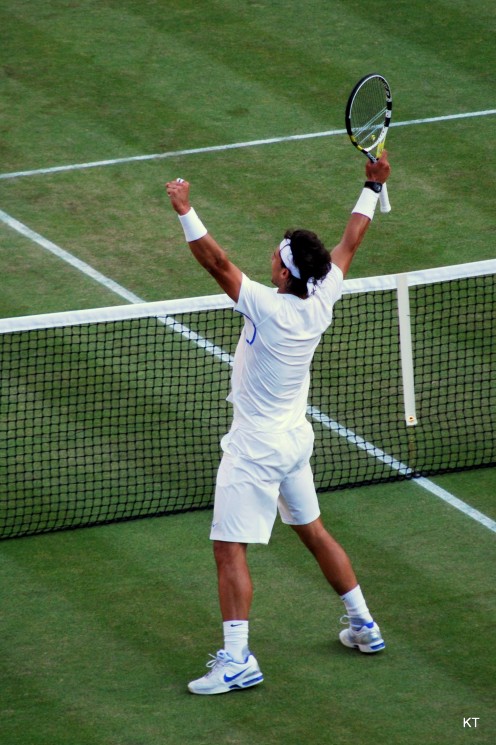
2008 - Federer vs. Nadal
After defeating Rafael Nadal in the 2006 and 2007 final, and winning five straight Wimbledon titles, Roger Federer looked almost invincible on the grass courts of the All England Club. Yet, Nadal was starting to get the better of him on the other surfaces, especially clay. The 2008 final between the World No. 1 and No. 2 at the time is regarded by many as the greatest match in history.
In a dramatic 5 set match that went long into the summer evening, Federer came within two points of a sixth straight title, however, it was Nadal who eventually triumphed 9-7 in the final set to win his maiden Wimbledon title 6-4, 6-4, 6-7(5), 6-7(8), 9-7. Consequently breaking Federer's dominance and his hold on the Wimbledon trophy.
2009 - Federer wins record 15th grand slam
Once again it was Federer who was involved in an epic 5 set match, this time against the big serving American, Andy Roddick, who he defeated in the 2004 and 2005 final. It was only after 77 games that the Swiss finally won, winning 16-14 in the final set, in a match which lasted over 4 hours. Amazingly he only broke Roddick's serve once, and crucially it was in the 77th and final game of the match, and was enough to mean that Federer would break Pete Sampras' record of 14 grand slam titles, instilling him as the most successful player ever.
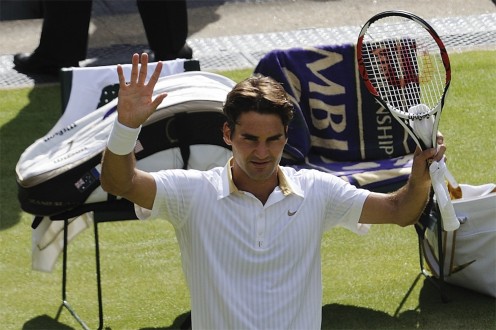
2010 - Longest Ever Match
Perhaps one of the most memorable moments at Wimbledon occurred in 2010 in a first round match between the American, John Isner, and Nicolas Mahut of France. After sharing the first four sets, they embarked on a deciding set, but little did they know that it would only be after 11hours and 53minutes of play that the match would eventually finish.
After the match was played over 3 days, Isner eventually triumphed an extraordinary 70 games to 68 in the fifth set; a set which took an unbelievable 8 hours and 11 minutes to play. Each player served over 100 aces and they contributed to a surreal sporting moment that will go down in history as the longest tennis match ever played.
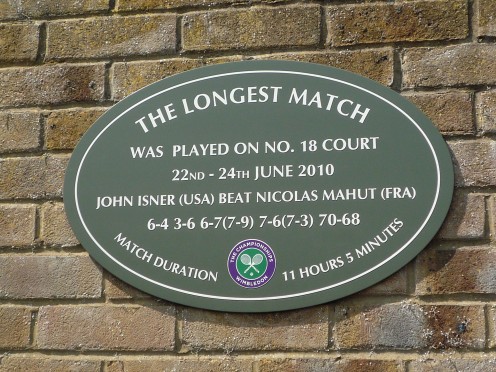
Murray ends 77-year wait for British Mens Champion
In 2013, Andy Murray won his first Wimbledon title and became the first British man to win the trophy since Fred Perry in 1936.With 15000 spectators willing him on, and millions of Britons watching at home, the Scot came through 6-4 7-5 6-4 against the World No. 1 Novak Djokovic. Murray had endured an emotional defeat in the 2012 final against Roger Federer, but had bounced back to win Olympic Gold, and win his first grand slam at the US Open. After winning he paid tribute to coach Ivan Lendl, who helped him to end his grand slam duck. It was a magnificent achievement and his historic triumph capped off an incredible turn-around from his crushing defeat in 2012.
Your Opinion
What do you think is the greatest Wimbledon moment?
Wimbledon Quiz
view quiz statisticsHistory of Wimbledon Timeline
Year
| Event
|
|---|---|
1868
| All England Lawn Tennis Club founded
|
1877
| First Gentlemens Singles Championship held
|
1884
| First Ladies Singles Championship held
|
1908
| Olympic tennis held at Wimbledon
|
1920
| All England Club moves to new home at Church Road
|
1937
| Championship is televised for the first time
|
1940
| Centre Court damaged by bomb
|
1968
| First Open Wimbledon (allowed professionals)
|
1977
| Museum opened to mark 100 year anniversary
|
1997
| New Court No.1 unveiled
|
2009
| Roof opens on Centre Court
|

